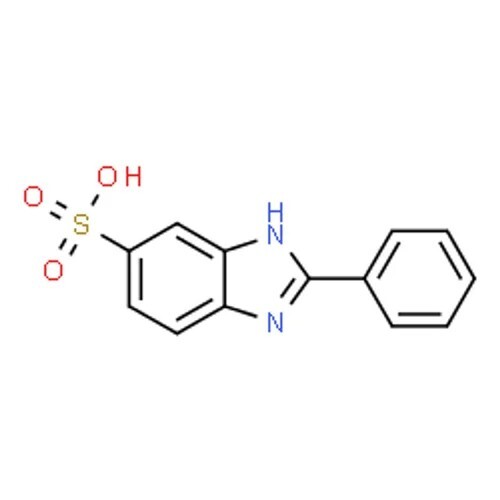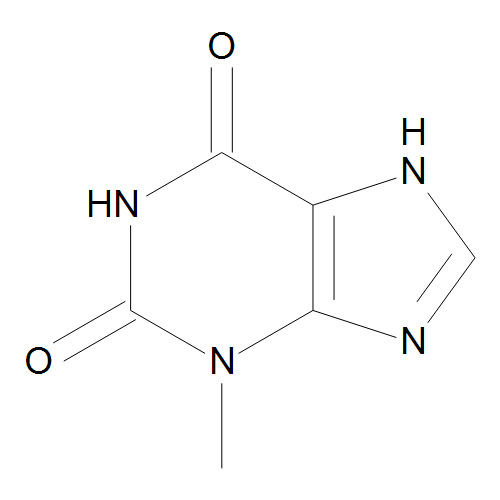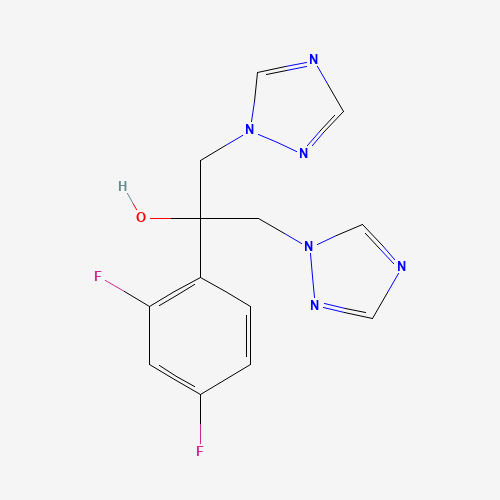- Home Page
- Company Profile
-
Our Products
- Pharmaceutical Chemical
- 4-Hydroxy Coumarin
- Sodium lauroyl sarcosinate
- 6-Chloro-2- Hexanone
- 10-Methoxy Imenostilbine
- Diamino Pyrimidine Oxide
- Dibromo Neopentyl Glycol
- Ethyl Hexyl Salicylete
- Ethyl Hexyl Triazone
- Piroctone Olamine
- Chlorhexidine Base
- 3,4-Dihydroxy 5-Nitrobenzaldehyde
- 1-3-Chloro Phenyl - 4 -3-Chioro Propyl Piperazine HCL
- Ketosulfane Drug
- Phenylephrine Base
- 2 - Ethoxyethyl 4-methylbenzenesulfonate
- Corey lactone diol
- (S)-(-)-N,N-Dimethyl-3-hydroxy-3-(2-thienyl) propanamine
- Avobenzone Chemical
- Homosalate Cosmetic Grade
- Active Pharmaceutical Ingredients
- 2-CHLORO-1-(3-HYDROXYPHENYL) ETHAN-1- ONE
- Ethyl Hexyl Glycerine
- 7 Chloro Quanalidine
- Sodium Ascorbyl Phosphate
- Theobromine API Powder
- Trichlorocarbanilide Chemical
- Phenylephrine Hydrochloride
- Bilastine API
- Duloxetine Hydrochloride
- Levocetrizine API
- Etoricoxib API
- Fluconazole API
- Oxcarbazepine API
- Carbamazepine API
- Telmesartan API
- Dompredone API
- Sertraline Hydrochloride
- Clopidogrel Busulphate
- 7- CHLORO-2-METHYLQUINOLINE
- AMINO,3 5-DIBROMO BENZALDEHYDE
- 3,4-DIHYDROXY-5-NITRO BENZALDEHYDE
- 1-(3-CHLOROPROPYL)-4-(3-CHLOROPHENYL) PIPERAZINE HYDROCHLORIDE
- 2-(2-METHOXY PHENOXY) ETHYLAMINE HYDROCHLORIDE
- 2-(2-METHOXY PHENOXY) ETHYL AMINE (BASE)
- 3,7-DIMETHYL-1H-PURINE-2,6-DIONE (THEOBROMINE )
- 6- CHLORO 2- HEXANONE
- [1,2,4] TRIAZOLO [4,3-A] PYRIDINE-3(2H)-ONE
- 1-HYDROXY-4-METHYL-6-(2,4,4-TRIMETHYL PENTYL)-2-(1H)-PYRIDINONE 2-AMINO ETHANOL
- CYCLOPROPYLMETHANOL CAS NO - 2516-33-8
- 1-(3-Chlorophenyl) piperazine
- Pharmaceutical Chemical
- Contact Us
1-HYDROXY-4-METHYL-6-(2,4,4-TRIMETHYL PENTYL)-2-(1H)-PYRIDINONE 2-AMINO ETHANOL
8969 INR/Kilograms
Product Details:
X
1-HYDROXY-4-METHYL-6-(2,4,4-TRIMETHYL PENTYL)-2-(1H)-PYRIDINONE 2-AMINO ETHANOL Price And Quantity
- 8969 INR/Kilograms
- 1000 Kilograms
1-HYDROXY-4-METHYL-6-(2,4,4-TRIMETHYL PENTYL)-2-(1H)-PYRIDINONE 2-AMINO ETHANOL Trade Information
- Others
- 1000 Kilograms Per Day
- 1 Week
- Yes
- Contact us for information regarding our sample policy
Product Description
The compound 1Hydroxy4methyl6244trimethylpentyl21Hpyridinone 2aminoethanol is a complex organic structure that includes a pyridinone core along with a hydroxyl group methyl groups a bulky alkyl substituent and an aminoethanol side chain Below is a detailed description
Chemical Information
Chemical Name 1Hydroxy4methyl6244trimethylpentyl21Hpyridinone 2aminoethanol
Chemical Formula C16H25N1O2
Molecular Weight 26338 gmol
Structure
A pyridinone ring system a sixmembered aromatic ring with one ketone group at the 2position and a hydroxyl group at the 1position
Methyl groups are attached at the 4position of the pyridinone ring making it a substituted derivative
The 6244trimethylpentyl group is a branched alkyl chain which contributes steric bulk and hydrophobicity
The 2aminoethanol group is attached at the other end of the structure containing both an amino group NH2 and a hydroxyl group OH likely making the molecule hydrophilic and capable of forming hydrogen bonds
Physical Properties
Appearance Likely a solid with a pale to light yellow or offwhite color depending on purity
Melting Point Not readily available but it can be assumed to be moderate due to its relatively large and bulky molecular structure
Solubility
Likely soluble in organic solvents such as methanol ethanol and acetone
The presence of the aminoethanol group suggests it may also be soluble in water depending on the pH and concentration
May be poorly soluble in nonpolar solvents due to the bulky alkyl chain
Applications
1 Pharmaceutical and Medicinal Chemistry
This compound could be a potential candidate in drug design especially for systems requiring the interaction of pyridinone scaffolds with biological targets
The aminoethanol side chain could make this compound useful in the development of bioactive molecules possibly interacting with enzymes receptors or proteins
The bulky alkyl group may also be involved in enhancing lipophilicity or facilitating the compounds ability to cross biological membranes such as in CNStargeting drugs
2 Organic Synthesis
The compound could serve as an intermediate in the synthesis of more complex molecules particularly those requiring a pyridinone core with functional groups like hydroxy amino and alkyl chains
The hydroxypyridinone framework is also known for its potential use as a chelating agent in some chemical reactions
3 Agricultural Chemistry
Given the structures similarity to compounds used in agricultural chemistry such as fungicides or pesticides this compound might exhibit antimicrobial antifungal or other protective roles in agricultural products
Reactivity
Hydroxyl Group OH at Position 1
The hydroxyl group is likely reactive in esterification etherification and other condensation reactions It may also participate in hydrogen bonding interactions with biological macromolecules
Methyl Groups CH3
The methyl groups at the 4position and on the alkyl chain increase the molecules steric hindrance and lipophilicity making it more hydrophobic and potentially more resistant to enzymatic degradation
Amino Group NH2
The amino group at the 2aminoethanol part of the molecule is basic and nucleophilic enabling it to form salt bridges or hydrogen bonds with other molecules It can also participate in further chemical transformations like acylation or alkylation
Alkyl Substituent 244Trimethylpentyl
The bulky trimethylpentyl group significantly increases the lipophilicity of the molecule and may contribute to its biological activity by increasing membrane permeability or promoting binding to hydrophobic pockets in proteins or enzymes
Pyridinone Ring
The pyridinone ring system itself is a highly reactive moiety and the structure might facilitate coordination with metal ions which is why pyridinones are often used in metalchelation chemistry and may also exhibit biological activity through metalbinding
Safety and Handling
Toxicity
The compounds toxicity profile would need to be evaluated but it may present some risk due to the presence of an amino group which could be reactive and the bulky hydrophobic alkyl chain
As with any organic compound it should be handled with care and protective equipment PPE such as gloves goggles and lab coats should be used
Handling
Handle in a wellventilated area or fume hood to avoid inhalation of vapors
Ensure that it is stored in a cool dry and dark place to avoid decomposition or reaction with moisture
Synthesis
The synthesis of 1hydroxy4methyl6244trimethylpentyl21Hpyridinone 2aminoethanol could involve multiple steps
1 Formation of the Pyridinone Core This might be achieved through cyclization reactions involving appropriate precursors such as 24dimethylpyridine or other pyridine derivatives and a carbonylating agent
2 Introduction of the Hydroxyl Group The hydroxyl group at position 1 may be introduced via selective hydroxylation or oxidation
3 Alkylation The 244trimethylpentyl group could be introduced through an alkylation reaction using the corresponding halide or via a Grignard reagent
4 Attachment of the 2Aminoethanol Side Chain This could be achieved through nucleophilic substitution using an appropriate aminoethanol precursor
Conclusion
This compound has potential applications in pharmaceuticals and organic synthesis due to its unique structural features including a pyridinone ring a functional aminoethanol group and a bulky hydrophobic side chain Its reactivity and interactions with biological targets depend on the functional groups and their ability to participate in hydrogen bonding electrostatic interactions or coordination chemistry
Would you like further exploration of its synthetic routes potential biological activity or specific reactivity under certain conditions
Enter Buying Requirement Details




![[1,2,4] TRIAZOLO [4,3-A] PYRIDINE-3(2H)-ONE](https://cpimg.tistatic.com/10214714/b/4/-1-2-4-TRIAZOLO-4-3-A-PYRIDINE-3-2H-ONE.jpg?tr=w300)

 Send Inquiry
Send Inquiry  Send SMS
Send SMS 
 English
English Spanish
Spanish French
French German
German Italian
Italian Chinese (Simplified)
Chinese (Simplified) Japanese
Japanese Korean
Korean Arabic
Arabic Portuguese
Portuguese